Is 50 Too Old To Start Powerlifting?
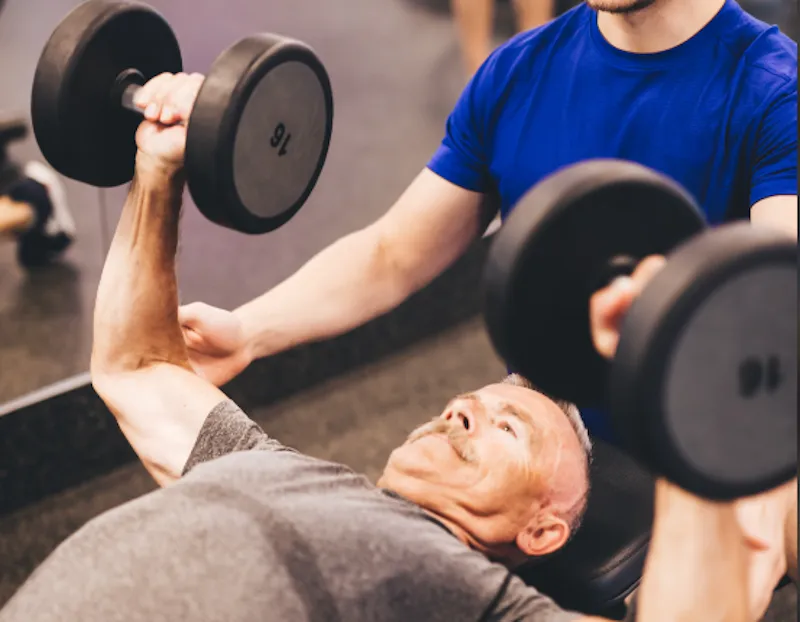
What's In This Article
- Key Takeaways
- Introduction
- Is 50 Too Old to Start Powerlifting?
- The Golden Rules for Starting Powerlifting After 50
- Creating a Risk-Free Powerlifting Routine in your 40s and 50s
- The Impact of Powerlifting on Health and Aging
- Navigating Powerlifting as an Older Lifter
- Conclusion
- Frequently Asked Questions
- References
- Resources
Key Takeaways
- Age is not a barrier to participating in and succeeding at powerlifting, with numerous examples of individuals achieving competitive success well into their 40s, 50s, and beyond.
- Safe strength training for beginners over 50 involves understanding your body’s limits, setting realistic goals, prioritizing injury prevention and recovery, and approaching powerlifting with care and proper guidance.
- Powerlifting offers significant health benefits in old age, including cognitive improvements, hormonal regulation (such as increased testosterone levels), muscle mass maintenance, and enhanced bone density, contributing to overall well-being and independence.
Introduction
Dispelling the myth that powerlifting is for the young, this article will take you through safe and effective strategies for individuals of any age. Prepare to learn how to start powerlifting later in life, understand its benefits to physical and mental health, and realize why age should never be a deal-breaker for strength training.
Is 50 Too Old to Start Powerlifting?
There’s a persistent myth that powerlifting is reserved for the young. The truth, however, is quite the contrary. Data from openpowerlifting.org clearly shows the prevalence of older athletes. Here is a handful of the many examples:
- Cindy Tilton, who, at 50, showcased a stunning 131.5kg bench press in competitive powerlifting
- Helen Redhead, Sportive Tricks coach, who began in her 40s and has won 3 world titles
- Jason Swalwell, Head coach at Sportive Tricks, who started in his mid-40s and has won two world titles
- Suzanne Davis achieved a total weight of 502.5kg at 53 and a body weight of 65.8kg.
The adage ‘old man strength’ isn’t just a saying; it’s a reality highlighting older athletes' enduring power. These individuals prove that age is not a limitation when achieving athletic success.
Research and expert consensus confirm that age should never be considered a limiting factor for growth, improvement, or success in strength gains. (Marzuca-Nassr et al., 2024; Peterson et al., 2010).
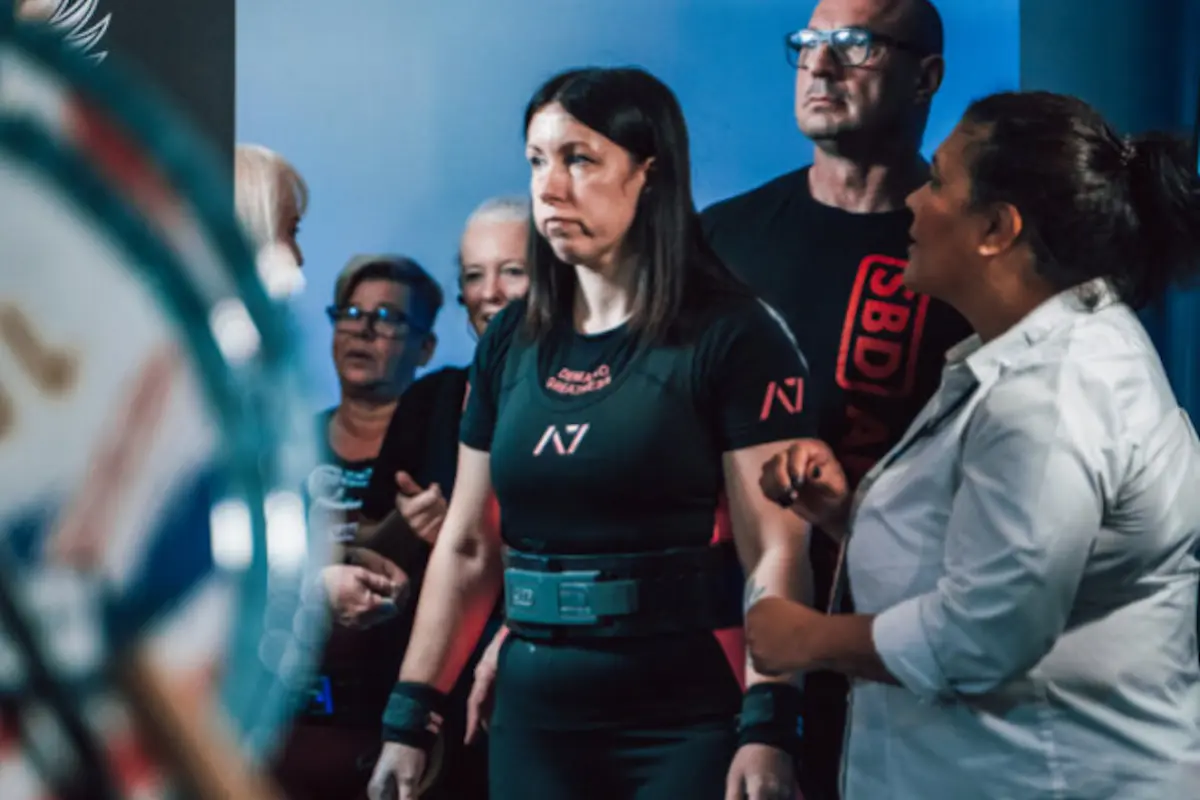
The Golden Rules for Starting Powerlifting After 50
Starting after 50 is not about proving something; it’s about improving and respecting your body. It’s a process that should be approached with care, mindfulness, and the golden rules of safe strength training.
- Before even engaging with weights, evaluating your joint and ligament capacities is paramount.
- This means understanding your body’s limitations and working within them to build a robust foundation for your powerlifting routines.
- With a good fitness base and proficiency in the main lifts, you’re setting the stage for a risk-free introduction to the sport.
- Guidance from coaches on powerlifting techniques can facilitate injury prevention and a seamless entry into the sport, making sports practice more enjoyable and safe.
Setting Realistic Training Goals
- Set goals like you'd plan a route on a map - they give each workout a clear purpose
- Don't rely on motivation - build discipline instead, as it's more reliable and lasting
- Make your goals specific and measurable, with a clear checklist to follow
- Take big goals and break them down into smaller ones you can track daily, weekly, and monthly
- Learn to accept the hard parts - the struggles and setbacks are how you grow stronger and more disciplined
Emphasizing Injury Prevention
- Safety is crucial in powerlifting, especially if you're starting at 50 years old
- Always warm up properly with stretches and mobility work before lifting to prevent injuries
- Learn correct form first - using the right muscles in the right way keeps you safe
- Pay attention to your body - some discomfort is ok, but pain means stop
- Make recovery a priority - use massage and rest to help your body heal between workouts
Prioritizing Good Recovery
- Recovery is not just rest - it's when your body builds strength
- As you get older, your body needs more time to recover from lifting
- Focus on these key recovery elements:
- Getting enough sleep
- Eating well, including healthy fats
- Drinking plenty of water
- Be careful about fall risks after workouts, especially when tired
- Using massage can help your muscles recover and keep you stable
- Good recovery habits help you lift longer and stronger, especially as you age
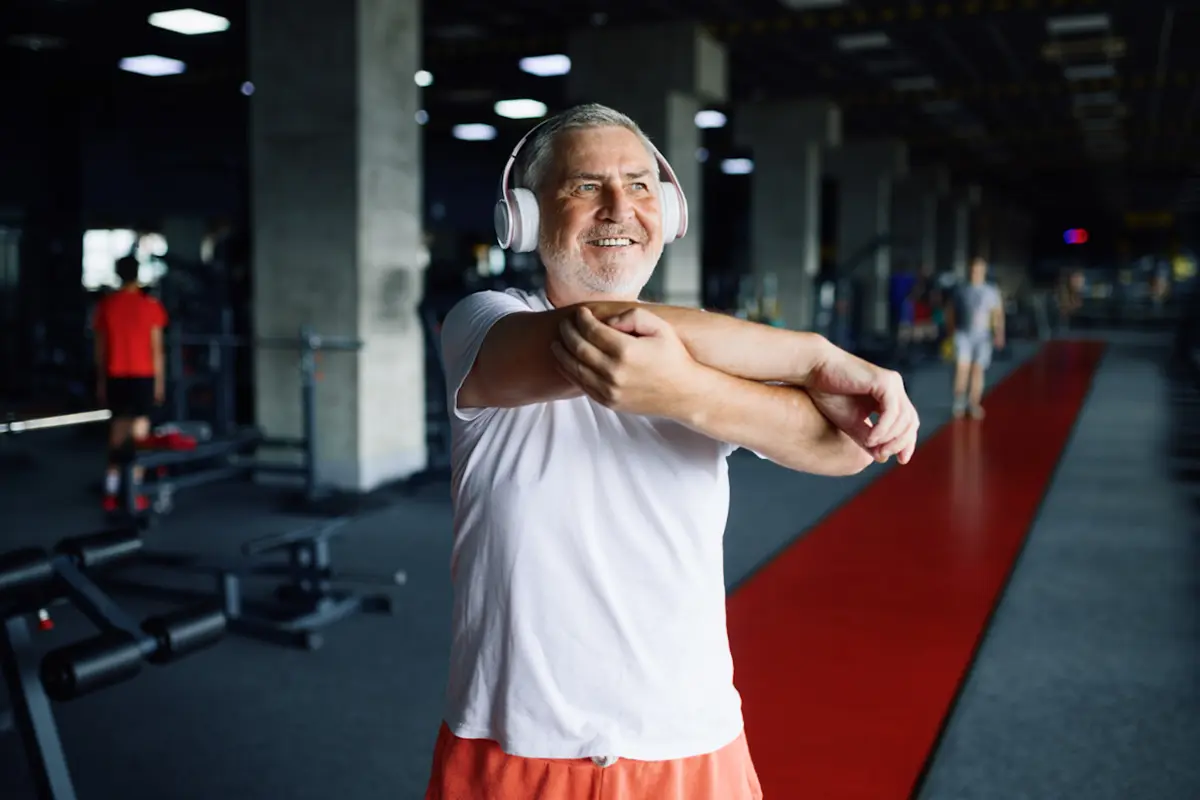
Creating a Risk-Free Powerlifting Routine in your 40s and 50s
How should risk-free powerlifting routines for someone over 50 be structured?
- It starts with mastering the core lifts—squats, bench presses, and deadlifts—and a training plan that emphasizes endurance without leading to exhaustion.
- Ensure that your workouts are characterized by steady intensity growth and allow for adequate rest between sets and training sessions.
- A well-rounded approach includes compound lifts for overall muscle strength and isolation exercises to maintain fitness.
- Incorporating some yoga and cardio training to maintain overall fitness is a good idea.
Balancing Training Volume and Intensity
- Progressive overload means slowly increasing your weights and reps over time
- This steady approach helps build muscle while preventing injury
- For older beginners:
- Start with 3 sets of 5 reps for main lifts
- Use weights that are 65-75% of your one-rep max
- Keep the pace slow and steady
- This careful approach:
- Respects your body's age
- Helps you get stronger safely
- Lets you keep lifting for years to come
Incorporating Full-Body Workouts
Chad Waterbury, author of "Elite Physique," suggests that older lifters typically benefit from three full-body training sessions weekly, alternating two workouts focusing on different movement patterns. He emphasizes the importance of quality over quantity in training volume.
- Full-body workouts are key for powerlifting training programs, especially as you age
- Main exercises like squats, deadlifts, lunges and bench press:
- Work your entire body
- Fight age-related muscle loss
- Improve balance and movement
- Lower your risk of falling
- These exercises help you:
- Build strength evenly across your body
- Make your core stronger
- Handle daily activities better
- Functional exercises like Farmer's Carries:
- Improve stability and posture
- Help you move better in daily life
- Build practical strength
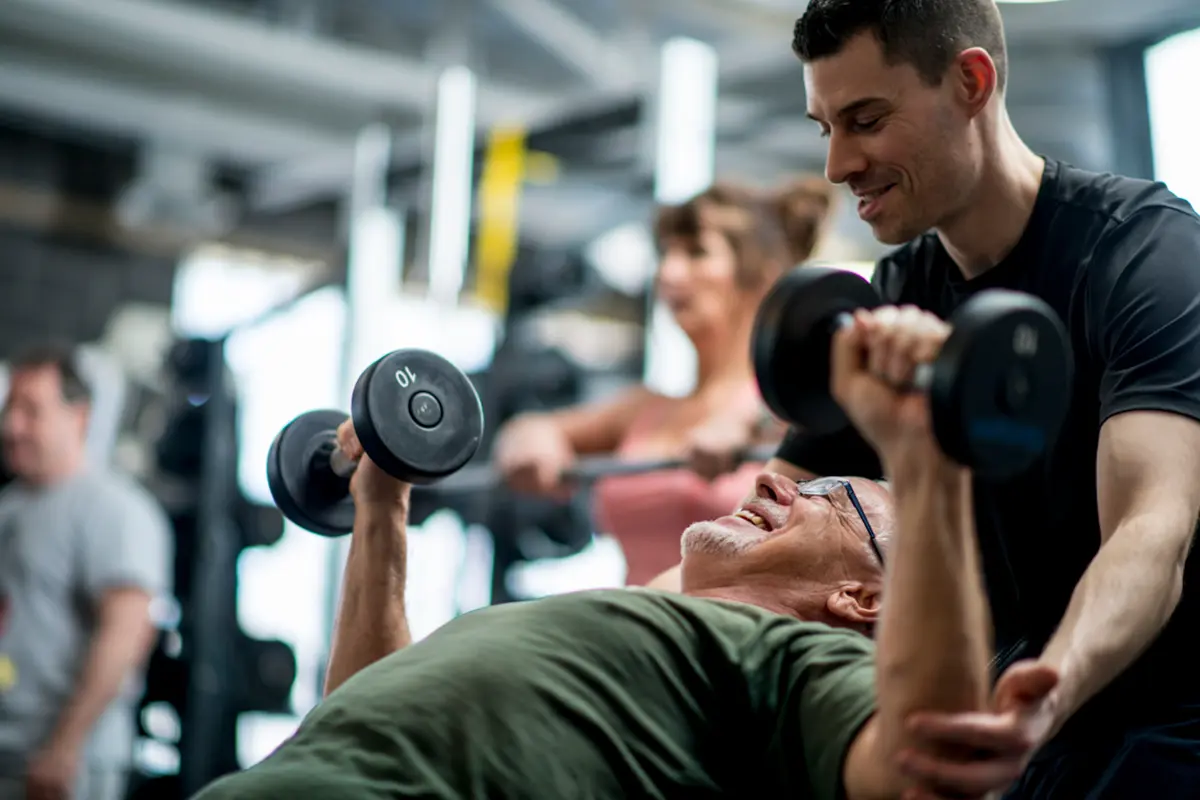
The Impact of Powerlifting on Health and Aging
Powerlifting isn't just about lifting heavy weights - it offers wide-ranging health benefits.
- Research shows it improves brain function, particularly in older adults with better information processing and mental focus (Xu et al., 2023).
- Beyond building strength, powerlifting affects essential hormones, including growth hormone and testosterone. These hormonal benefits and increased strength can help people of all ages improve their health through resistance training (Jakobsson et al., 2021).
The result? A positive impact on overall health and well-being that defies the stereotypes associated with aging. Deb Williams, a 69 powerlifter, began training after two bouts of colon cancer. At a recent American Drug Tested World Championship, she set world records in her age group for both squats and deadlifts.
Williams emphasized the improved mobility she's gained, stating, "I'm so mobile, I can do anything. I have two little grandsons. I can crawl on the floor with them and get down and get up. I don't even have to think twice about it."
Testosterone Levels and Muscle Mass
Testosterone plays a starring role in muscle development.
- It stimulates amino acid uptake and protein synthesis, leading to muscle growth and strength.
- As men age, testosterone levels decrease, which can cause muscles to lose their mass and lead to diminished physical capabilities.
- Powerlifting training can optimize acute testosterone release, even though the response in older adults might be less pronounced than in their younger counterparts.
- Increased plasma testosterone concentrations following a resistance training session is a valuable boost to muscle maintenance and growth.
Powerlifting and Bone Density
Our bones, much like muscles, require stress to maintain their strength and integrity. Dr Catherine Walter, a 71-year-old powerlifter and Oxford University's Linacre Ladies That Lift club captain, began strength training at 65. She noted, "I love the fact that at 71, I have the bone density of a 20-year-old, and that this is largely due to lifting."
- With their high-intensity resistance training and multijoint exercises, powerlifting routines are particularly effective in promoting bone health and helping build muscle.
- By stimulating bone remodeling, lifting heavy weights helps maintain and even improve bone mass and structure, reducing the risk of fractures—a concern growing with age (Massini et al., 2022).
- Building muscle mass and improved balance and coordination indirectly contribute to bone health by minimizing the likelihood of falls.
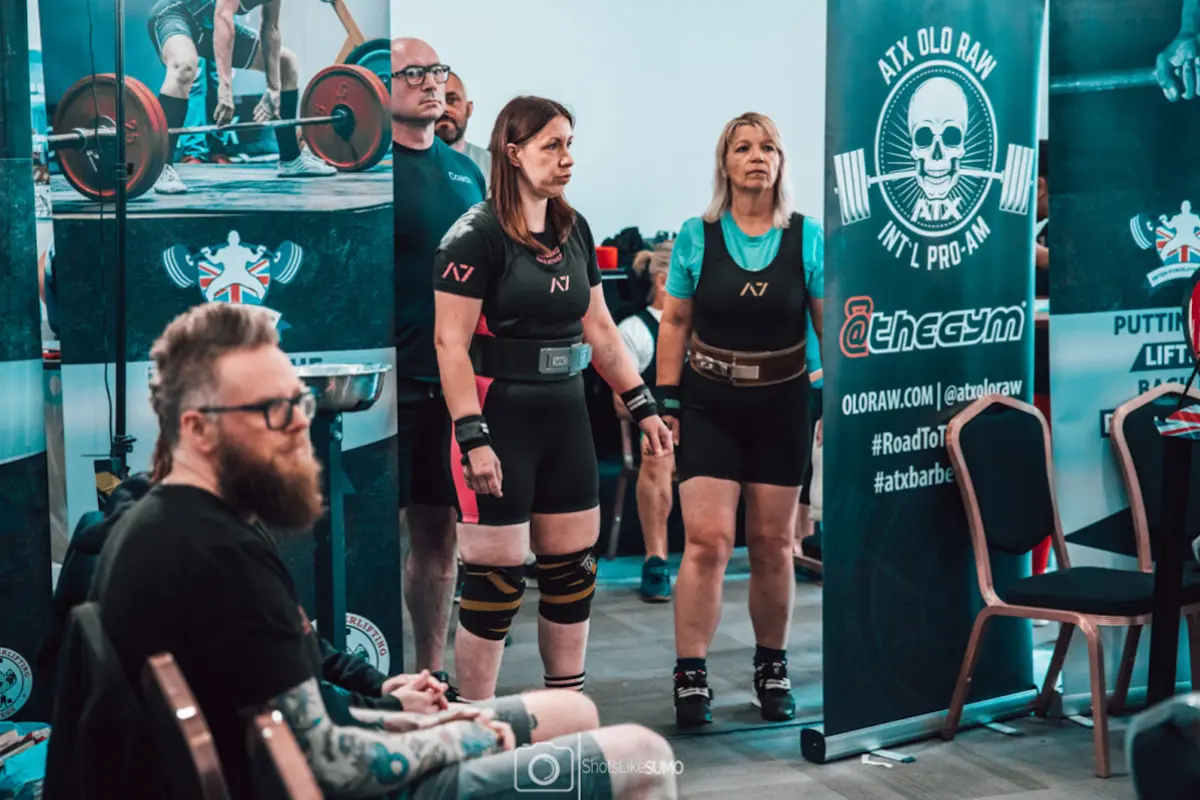
Navigating Powerlifting as an Older Lifter
Starting powerlifting after 50 requires finding the right gym environment. Here's what to look for:
- A fully equipped facility with essential gear:
- Power racks and benches
- Quality barbells
- Specialized powerlifting equipment
- A supportive atmosphere that includes:
- Experienced coaches familiar with training older adults
- Fellow lifters who create a motivating environment
- Age-appropriate training programs focusing on safety and progression
Before joining, make sure to:
- Try out the gym through trial periods or intro sessions
- Check if the location and hours work for your schedule
- Review their personal training options and coaching staff
- Evaluate whether the gym culture feels welcoming and supportive
The right environment will help you build strength safely while enjoying the sport's social aspects.
Preparing for Your First Powerlifting Competition
The build-up to your first meet can elicit both excitement and nerves. Here are some key steps to help you prepare:
- Equip yourself with federation-approved gear, including the appropriate singlet and footwear.
- Have your membership card and identification at the ready.
- Understand the lift commands and practice them during your training.
- Set realistic goals that align with your training and capabilities.
Pack your essentials—food, drink, athletic tape, a change of clothes, and anything else—in a well-organized bag. Remember, this competition is a learning experience, so approach it with an open mind, ready to absorb everything the day brings your way.
Conclusion
It's never too late to start strength training. Age doesn't limit you. Focus on safe routines with good recovery. Strength training boosts brainpower, hormones, and bone health. Whether new to the gym or switching to another sport, now's a great time to build strength, increase longevity, and improve your health. Age is just a number!
Frequently Asked Questions
Can you start powerlifting in your 50s?
Yes, you can start in your 50s and still progress and benefit from weight training at any age.
What is the peak age for powerlifting?
Most athletes' peak age for powerlifting is around 34 years old, with lighter weight class athletes reaching their peak performance earlier than those in higher weight classes.
How does powerlifting affect testosterone levels in older men?
Powerlifting can optimize acute testosterone release in older men, aiding muscle maintenance and growth even though the response may be less pronounced.
What should I prepare for my first powerlifting meet?
Prepare federation-approved gear, understand lift commands, set realistic goals, and pack essentials like food, drink, and athletic tape for a smooth first meet.
References
- Jakobsson, J., Theos, A., & Malm, C. (2021). Effects of Different Types of Lower Body Resistance Exercise on Upper-body Strength in Men and Women, with Special Reference to Anabolic Hormones. International Journal of Exercise Science, 14(3), 1052–1069.
- Massini, D. A., Nedog, F. H., de Oliveira, T. P., Almeida, T. A. F., Santana, C. A. A., Neiva, C. M., Macedo, A. G., Castro, E. A., Espada, M. C., Santos, F. J., & Pessôa Filho, D. M. (2022). The Effect of Resistance Training on Bone Mineral Density in Older Adults: A Systematic Review and Meta-Analysis. Healthcare, 10(6), 1129.
- Marzuca-Nassr, G. N., Alegría-Molina, A., SanMartín-Calísto, Y., Artigas-Arias, M., Huard, N., Sapunar, J., Salazar, L. A., Verdijk, L. B., & van Loon, L. J. C. (2024). Muscle Mass and Strength Gains Following Resistance Exercise Training in Older Adults 65-75 Years and Older Adults Above 85 Years. International Journal of Sport Nutrition and Exercise Metabolism, 34(1), 11-19.
- Peterson, M. D., Rhea, M. R., Sen, A., & Gordon, P. M. (2010). Resistance Exercise for Muscular Strength in Older Adults: A Meta-Analysis. Ageing Research Reviews, 9(3), 226–237.
- Xu, L., Gu, H., Cai, X., Zhang, Y., Hou, X., Yu, J., & Sun, T. (2023). The Effects of Exercise for Cognitive Function in Older Adults: A Systematic Review and Meta-Analysis of Randomized Controlled Trials. International Journal of Environmental Research and Public Health, 20(2), 1088.